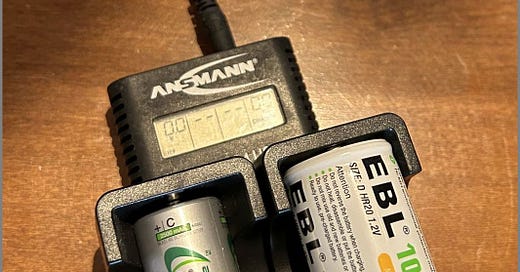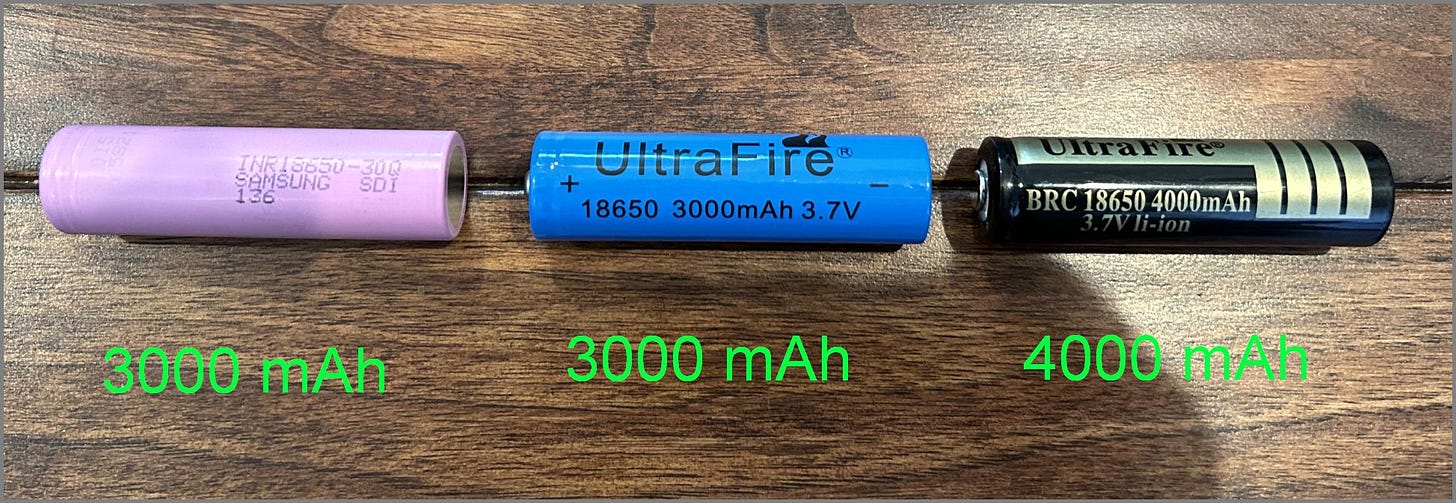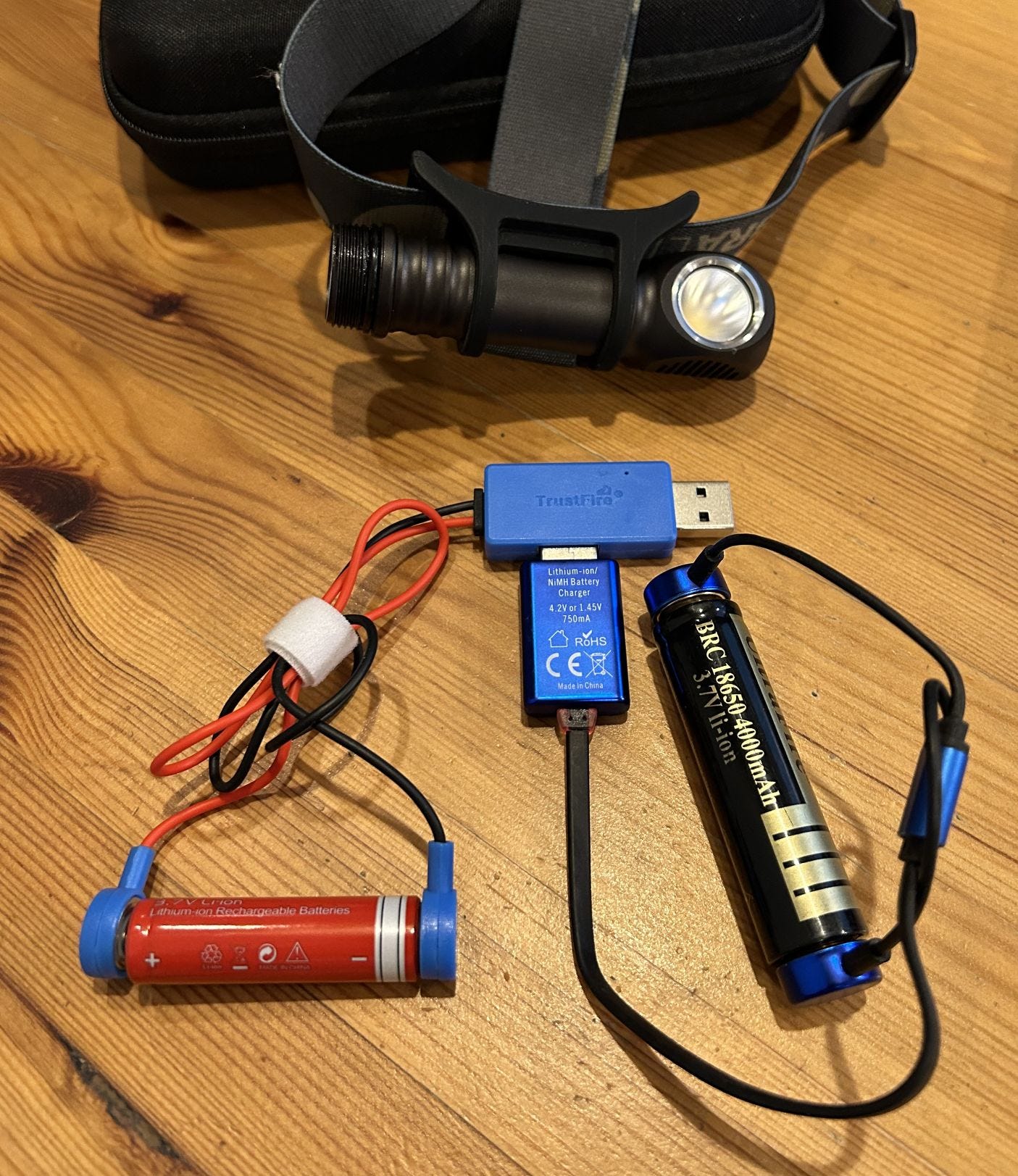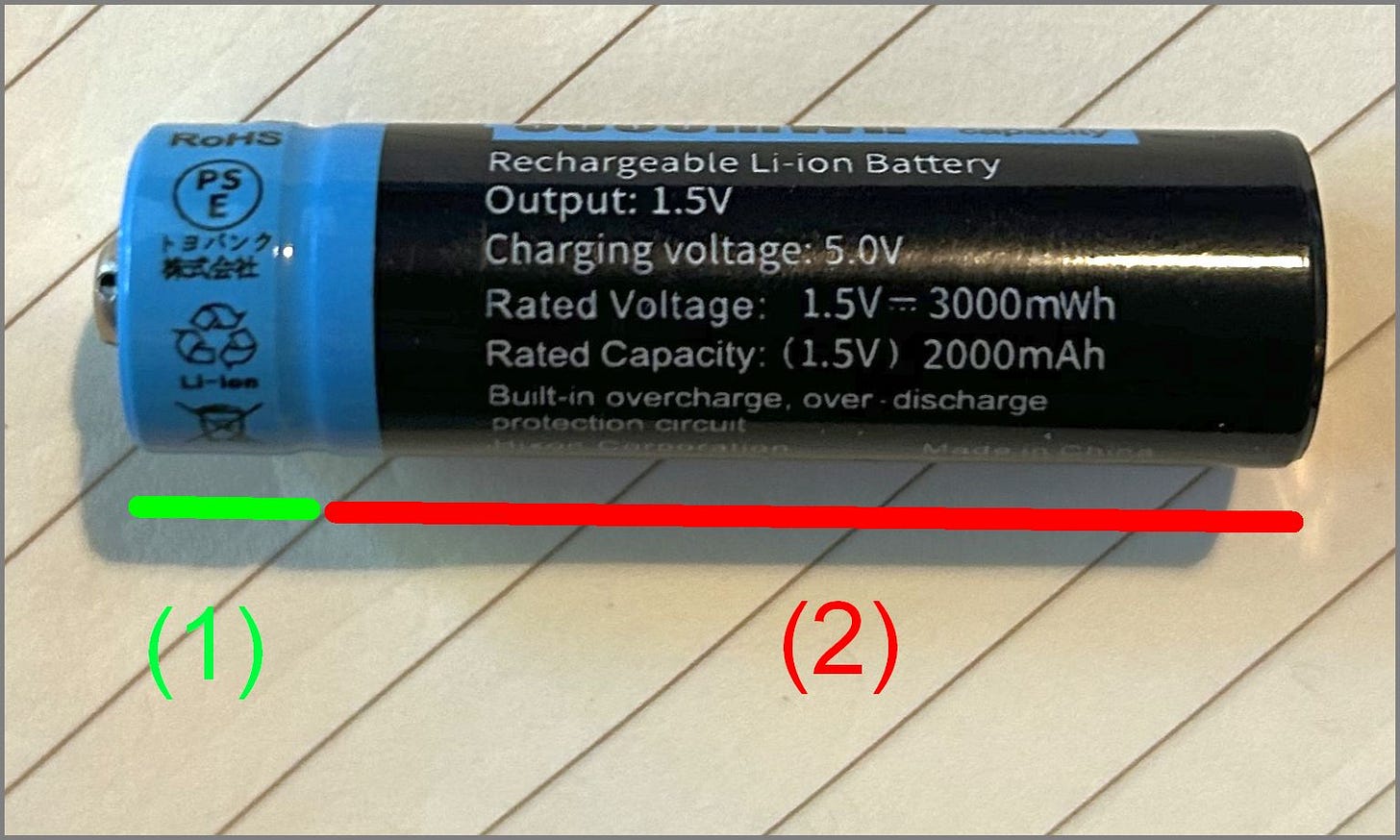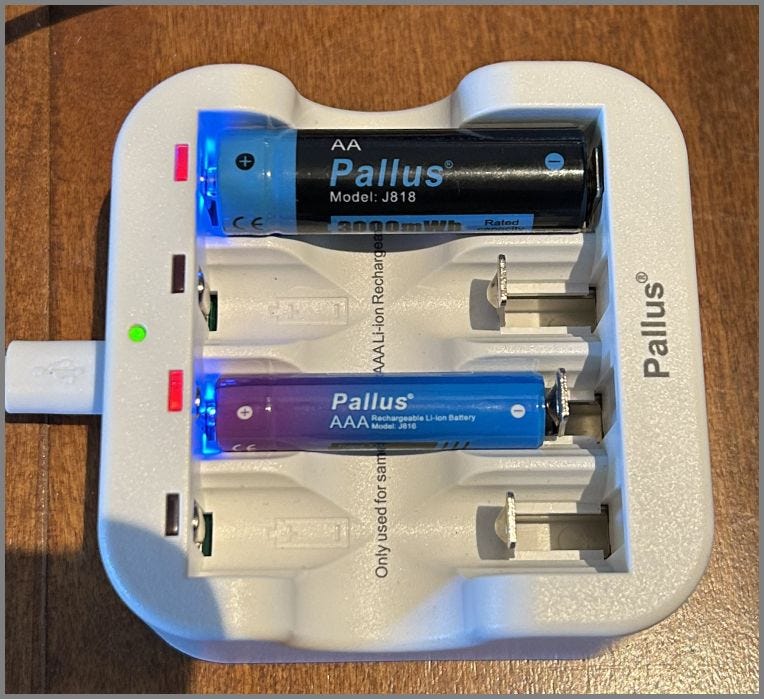Before we dive in, a few readers asked about the adapters I mentioned for C and D size NiMH cells so here you go:
I use the rechargeable C cells in my game camera and the D cells in my hand-held fuel transfer pump.
Power Banks
Almost everything with a large rechargeable system offers the added functionality to recharge other things via USB, thus it is also a power bank. Below is an LED work light I have used for years and you can still purchase them under various Chinese names.
You can see that it accepts the awesome 18650 Li-Ion cell one way in the battery compartment and AAs the cross-way. Clever. The green arrows show the recharge port (smaller USB micro, a recipient of power) and the USB-A output. In fact I had this unit recharging my iPhone while I took these photos.
There is a neat trick with using Li-Ion rechargers explained at the end and really, one of the reasons you read this blog. At least I hope so.
USB Charging
I doubt the architects of the Universal Serial Bus ever expected it would also become a de facto tool to recharge (and power) small devices. When I first started using USB chargers the best you could hope for was 500mA, popularized by the white “ice cube” wall chargers that Apple shipped with iPhones. Nowadays 2,000mA is common and that’s about the limit of this at a source of 5 volts. Until…
USB-C. Those are the connectors that look the same on both ends, a flattened oval. You can’t plug it in wrong so there is a visceral satisfaction involved as well (I’m sure this is part of the product experience).
I’ll get more into that in a future part on charging but USB-C can deliver 3-5 amps at rising voltages, up to 240 watts. That’s ⅓ horsepower!
Lithium Cells
This topic wraps up the coverage of small batteries. Lithium chemistry – lithium ion (Li-Ion) and lithium polymer (LiPo) – are here to stay in various forms. I won’t cover LiPo cells since you rarely see them loose; they are designed for specific products and rarely removeable.
Importantly, the high energy and power densities of these cells requires all manner of electronic and temperature protection during discharge and recharge. If a lithium cell (or a pack of them) goes into thermal runaway and catches fire, things go very bad very quickly. Think of the scene in the first Alien movie where its acid blood burns its way straight through the decks of the space ship. Or the unfortunate event were an EV catches fire and the emergency crews just let it burn itself out. Yeah, that bad.
The blue cells in the above section on power banks are the very common 18650 cells. You will find them in high-end headlamps (shown below) and flashlights as well as Tesla cars. Yes, Teslas use huge packs made with these cells! There are different capacities in the same physical size as you can see below:
The cell voltage is 3.7V so a special charger is needed, the standard NiCad or NiMH chargers won’t do it. Here are two that I use:
Unit (A) is the spectacular OLight UC charger which will handle NiCad, NiMH and Li-Ion cells without fuss. It even figures out the polarity! I have NO IDEA why OLight stopped selling these but I’m glad only one was stolen in a car break-in and I have a couple left. These are engineering works of art. I recently emailed their corporate HQ to ask why the UC Charger was no longer sold and their reply was “It is no longer sold.” Very informative. So if you happen to see one, buy it! (See addendum below)
Unit (B) is a TrustFire UC10 only for Li-Ion cells and is widely available. You have to put the red magnetic pad on the positive end of the cell and black on negative. But as an added bonus you can use this charger as front-end circuitry for an impromptu power bank if you attach it to a cell and plug in a charging cable to the port on the side (C)!
So like a plot point in a sci-fi movie you could gather up all your Li-Ion cells of random charge and using a UC10 and some other charger like the OLight, with one plugged into the other, drain all the low ones into a few fully charged cells. In fact here is a smaller EBL 800mAh cell (red) getting sucked dry to recharge the 4000mAh 18650 (black) I use in my Zebralight headlamp.
Lithium Masquerade
There are actually Li-Ion cells masquerading as alkalines I alluded to in Part 1. They go by various names but Pallus seems to be the most popular. The construction is very clever:
Section (1) is some circuitry to drop the 3.7V Li-Ion cell (2) down to a real 1.5V like a Duracell alkaline. The circuitry also manages all the details of protecting the cell during discharge and recharge. The net effect is you get a real 1.5V rechargeable AA or AAA cell! So what’s the catch? You need a special recharger that applies 5V:
But you do get a nice blue LED light emitted from the cell to tell you that it is recharging. Kinda blingy. You can use these everywhere you use an Eneloop NiMH and especially where the Eneloop’s 1.2V output just won’t cut it. You just have to pay more for these so I still use both for AA and AAA applications.
Addendum
Reader JL kindly took the time to inform me of the MiBoxer C2 Smart Charger. This baby will knock out FOUR of any battery chemistry at once, even the LiFePO4 (lithium iron phosphate) chemistry which I did not cover. It accepts both 120VAC and 12VDC inputs as well. A true advancement of the art. He comments “I have a couple of these, and being able to stick any battery I have into them is great! Even the 26650 I recently got from Olight.” I found it for around $45 on both eBay and the River Store.

